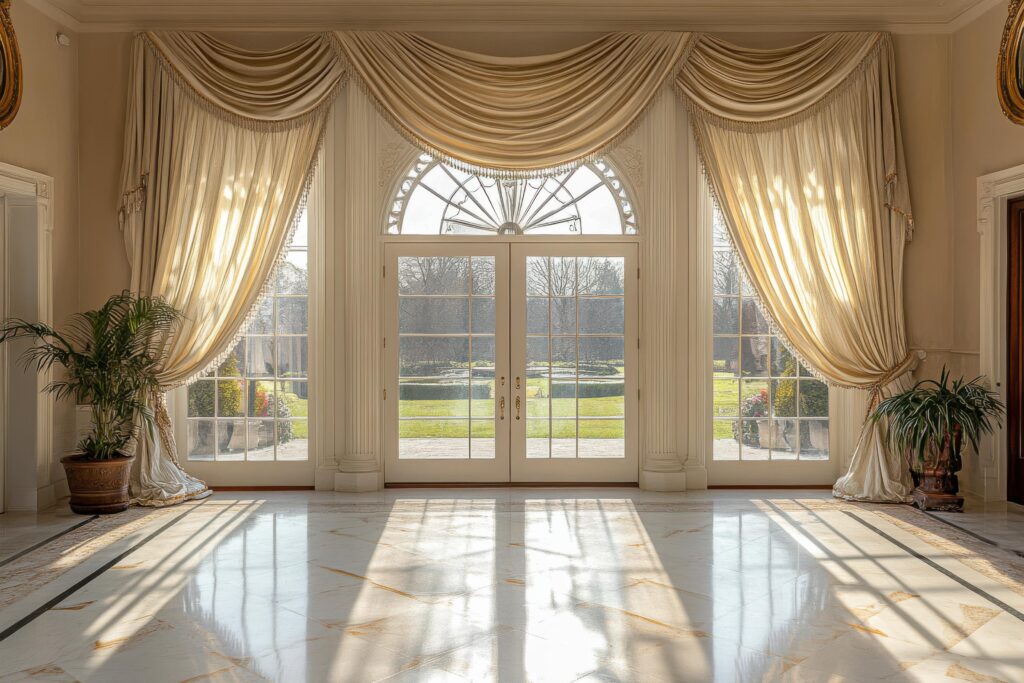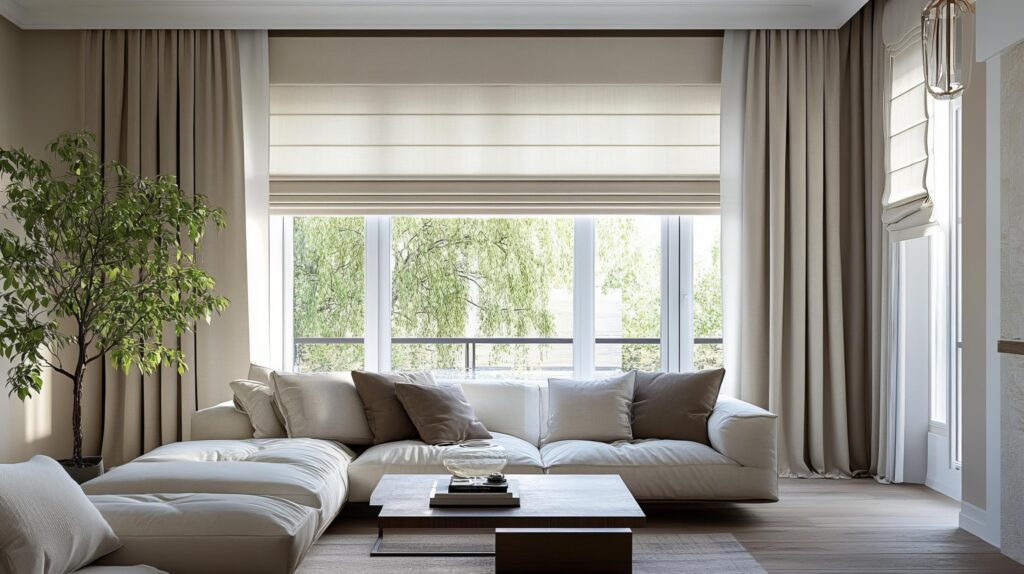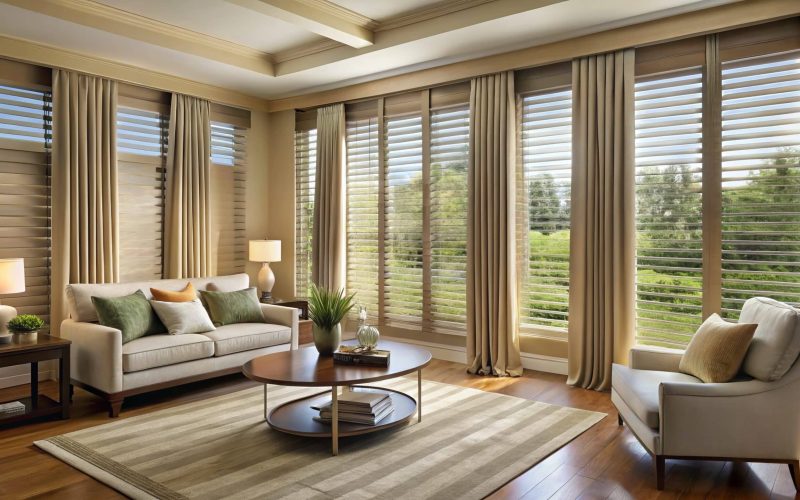Selecting the perfect window coverings is more than a design choice; it’s about balancing style, functionality, and the unique needs of your home. Inverted pleats and traditional pleats represent two distinct styles, each with its own advantages. Understanding the differences can help you make an informed decision that enhances your space.
Let’s explore these two popular styles, their features, and how they fit into different home aesthetics.
What Are Inverted Pleats?
Inverted pleats are a sleek, modern window treatment style. Instead of pleats folding outward, they fold inward, creating a flat, tailored appearance at the top of the curtain or drape. This design offers a minimalist and polished look, making it an ideal choice for contemporary spaces.
Best For:
- Modern, minimalist interiors
- Rooms with clean, streamlined aesthetics
- Homeowners seeking a subtle yet elegant finish
Why They Work Well:
- Their flat design keeps the overall look uncluttered and refined.
- They allow bold patterns or textures to stand out without being overwhelming.
- They’re highly versatile, working well for curtains, drapes, and Roman shades.
When paired with lightweight or medium-weight fabrics, inverted pleats provide a clean silhouette that doesn’t detract from other design elements in the room.
What Are Traditional Pleats?
Traditional pleats, such as pinch pleats, goblet pleats, or pencil pleats, are classic styles that add volume and texture to window treatments. These pleats are visible, creating a decorative and structured look. Traditional styles are often associated with timeless elegance and are a common choice for formal or classic interiors.

Best For:
- Classic, vintage, or eclectic interiors
- Spaces aiming for a cozy, inviting atmosphere
- Formal rooms like dining areas or libraries
Why They Stand Out:
- Traditional pleats add a sense of depth and luxury to window treatments.
- They complement heavier fabrics like velvet, damask, or brocade.
- They’re highly adaptable, working in both casual and formal settings depending on fabric choice.
This style works particularly well in larger rooms or spaces with high ceilings, where their fullness and structure can create a dramatic effect.
Differences Between Inverted Pleats and Traditional Styles
Here’s a quick comparison to help clarify the distinctions:
- Aesthetic Appeal
- Inverted Pleats: Clean, modern, and understated. They’re perfect for those who prefer simplicity.
- Traditional Pleats: Rich, decorative, and timeless. They suit spaces with a warm or formal ambiance.
- Fabric Compatibility
- Inverted Pleats: Work best with light to medium-weight fabrics for a smooth and crisp appearance.
- Traditional Pleats: Shine with thicker, textured fabrics that add volume and drama.
- Space Considerations
- Inverted Pleats: Ideal for smaller rooms or areas with low ceilings, as their flat design minimizes visual clutter.
- Traditional Pleats: Enhance larger spaces with high ceilings, where their fullness can balance out the scale of the room.
- Maintenance Needs
- Inverted Pleats: Easier to maintain due to their streamlined design, which collects less dust.
- Traditional Pleats: Require more upkeep to maintain their structured appearance, especially in high-traffic or dusty areas.
How to Choose the Right Style for Your Space
When deciding between inverted pleats and traditional styles, consider the following:
- What’s Your Home’s Overall Style?
- Inverted pleats complement modern and minimalist interiors.
- Traditional pleats pair beautifully with classic or eclectic designs.
- What Atmosphere Are You Creating?
- Use inverted pleats for a crisp, clean look that feels contemporary.
- Choose traditional pleats for a rich, layered appearance that adds warmth and depth.
- What Are the Functional Needs of the Room?
- Inverted pleats allow more natural light and are perfect for bright, open spaces.
- Traditional pleats can block more light and provide better insulation, making them ideal for bedrooms or formal areas.
- How Much Maintenance Are You Comfortable With?
- If you prefer low-maintenance options, inverted pleats are the way to go.
- If you’re willing to put in the effort for a more decorative look, traditional pleats are worth it.

Blending Styles Across Your Home
If you’re struggling to decide, why not use both? For example, inverted pleats can create a modern feel in casual spaces like the living room or kitchen, while traditional pleats can add a touch of elegance to formal areas like the dining room or master bedroom. This allows you to tailor each space to its specific purpose and vibe while maintaining a cohesive design.
Remember, your window coverings are more than just functional—they’re an integral part of your home’s personality. Whether you prefer the clean sophistication of inverted pleats or the timeless charm of traditional pleats, you’ll be adding a touch of beauty and style to your space.
Let Ambiance Window Coverings guide you through the process and transform your windows into a design statement you’ll love for years to come.

